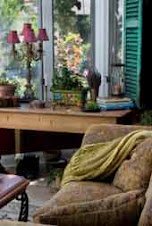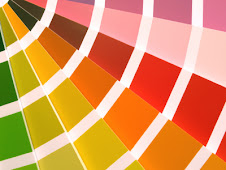 I was in the grocery line having a conversation with someone who noticed I was a professional home stager. I gave him my card and told him to call me when he was ready and suggested that in the meantime he could start working on his home's curb appeal. He smiled and asked me, "Just exactly what is curb appeal anyway?" So let's talk curb appeal and how to turn it up.
I was in the grocery line having a conversation with someone who noticed I was a professional home stager. I gave him my card and told him to call me when he was ready and suggested that in the meantime he could start working on his home's curb appeal. He smiled and asked me, "Just exactly what is curb appeal anyway?" So let's talk curb appeal and how to turn it up.At the start of every staging project is a well thought out staging plan based on the seller's budget. It is my job to guide the seller in making decisions as to how to divvy up the money, what to spend where to maximise the return. I always start with the curb appeal.
When my husband and I were in the market for a home we spent a great deal of time scoping out the areas we liked. We would ride though by day and by night trying to get a feel for the vibe of the neighborhood. On weekends we would frequent the local pub and coffee shop. Afterwards we would walk up and down the streets and imagine what it would be like to live there. I think all buyers are the same.
Then you see an adorable house that just draws you in from the street and you are intrigued enough to call for an appointment. That is what curb appeal is. Seducing a stranger from the street to want to see the inside of your house so they can decide if they would like to make it their home.
The view from the curb is the first chance you have to make a great impression. Here are some questions and suggestions to help you evaluate your own curb appeal; What does your yard look like? Are there weeds, does it need to be mowed, are the edges trimmed neatly? Is the house blocked from view by overgrown bushes and trees? Are the flower beds in need of mulch and some plantings?
What does the path to the front door look like? Maybe I should ask if there is a path to the front door? Is it well defined, well lit, and safe. I have seen homes with a cobble stone pathway so uneven and in need of leveling that you truly risk breaking an ankle to navigate it. I have seen homes with no pathway, nothing but a ditch stands between the front door and where you park. That is usually because the sellers use the back door, but showing a home via the back entrance can be a costly mistake.
If you are lucky enough to have curvy walkway, highlight it with flowers or lanterns. If your front elevation is all garage, try to guide buyer eyes into a well landscaped yard or paint your front door red to draw attention away from the garage.
Does the paint look good? Does the house need washing? Are the gutters falling off or full of dead and decaying leaves? Is the roof in good shape? And how about that driveway? When your home is on the market always park in the garage, if possible leave the driveway empty.
What are the steps like on the porch, the railings, and the front door itself. Buyers spend too much time at the front door while the agent opens the house to have it anything but pristine. A freshly painted front door tells the buyers that the house has been cared for. No spider webs, rotten wood, dead plants, peeling paint, rusty fixtures or soggy faded mats. No worn wreaths or tattered holiday flags. Make sure all glass sparkles, same goes for door handles and kick plates. Are the house numbers missing? What does the mailbox look like? Go out there and stand for a moment, you may be amazed at what you see if you can look through the buyers eyes.
Always have a flowering plant or evergreen bush in a pot at the front door, it makes for a nice welcome. Is there room for a rocking chair or two, a Adirondack chair and a small table? Set the scene, outdoor spaces are important and when they are defined buyers see it as additional living space that will garner your home extra points. Window boxes and shutters add tons of curb appeal. Install uplights to enhance the view at night, light the corners of the house, the front door and maybe even a nice tree in the yard. Keep the outside lights on while on the market, buyers will drive by at night.
Curb appeal is a biggie, don't overlook the value of the effort it takes to make yours great.


